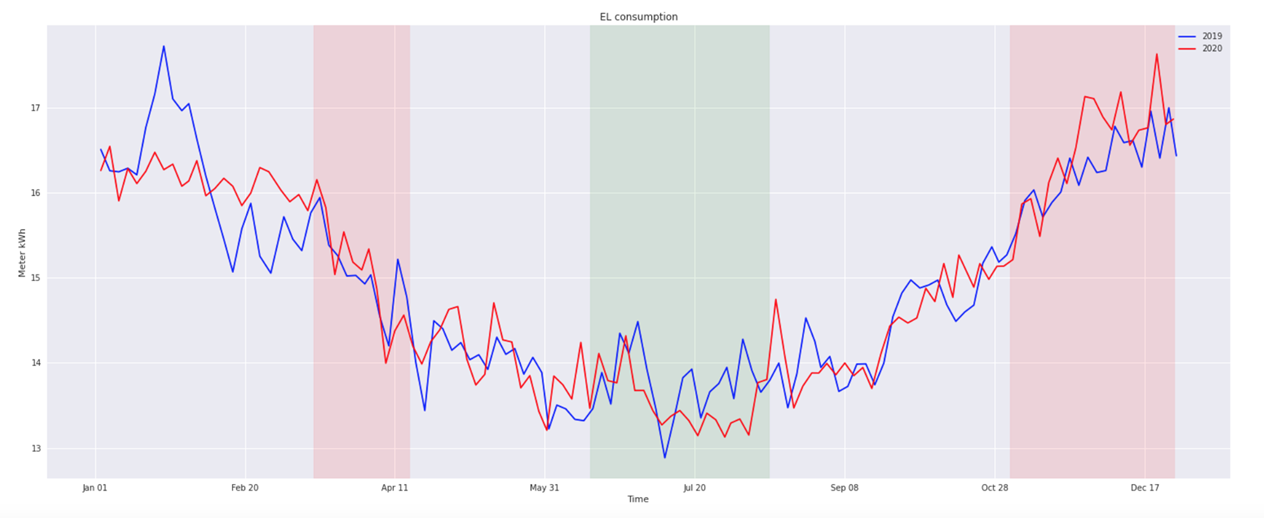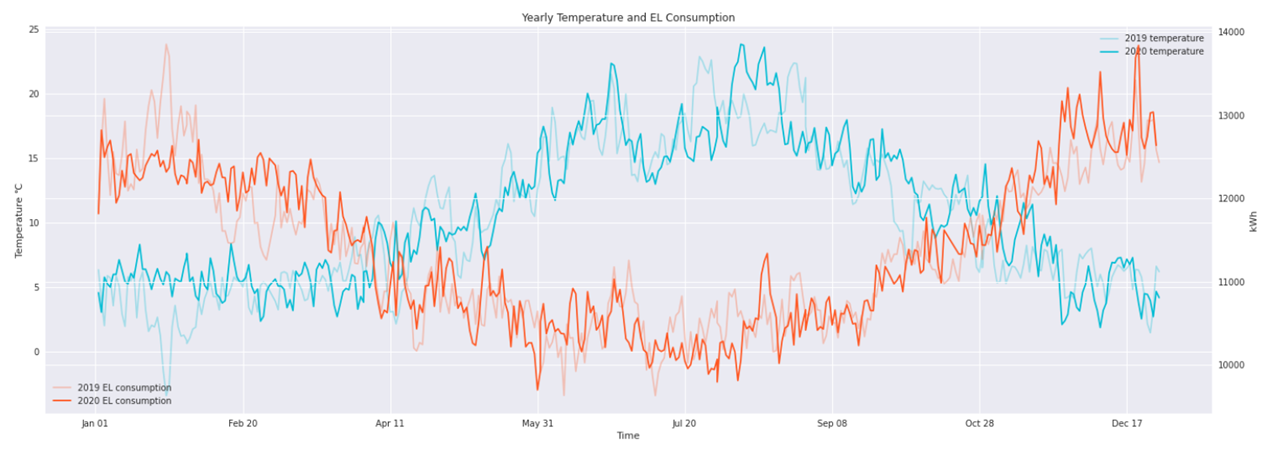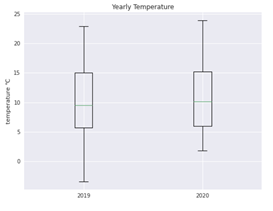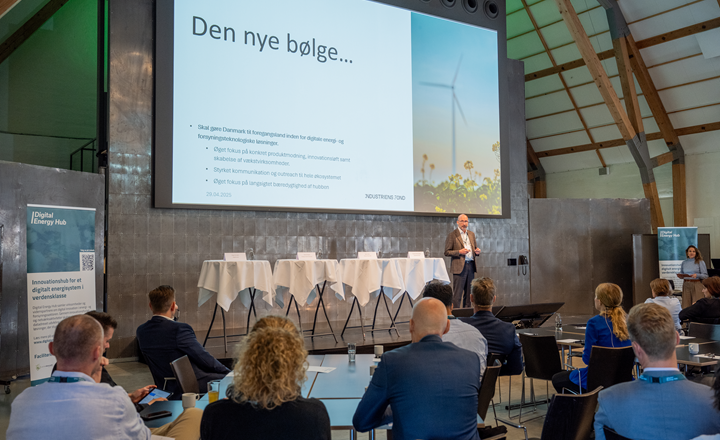Working from home and residential electricity consumption
Does working from home change the residential electricity consumption pattern in the Triangle Area? The breakout of covid19 changes our way of living. The Danish government started to adopt stricter policies, and working from home becomes the new trend. In this article, we are going to analyze how the electricity consumption pattern has been changed after the lockdown in the triangle area of Denmark (East Jutland).

Firstly, let’s have an overview of how the consumption pattern is like in 2019 and 2020. In the graph below, the red area represents the lockdown period in 2020. The first lockdown started on 13 March, and one month later the prime minister announced the first phase of reopening. On 5 November, a new lockdown was announced because of a mutated SARS-CoV-2 virus.

From the graph, we can see that the major consumption difference happens at the beginning of 2019 and 2020 instead of the lockdown period. In 2019, the average daily consumption per household fluctuated significantly in Q1, whereas the consumption in the Q1 of 2020 tends to be more stable.
If we zoom in a bit to have a look at the daily profile and weekly profile below, there is no significant difference between the data of 2019 and 2020. In the weekly consumption graph, the 2019 electricity consumption on weekends higher than the weekend consumption in 2020, which could be caused by the lockdown policies.

Is the pattern more affected by the temperature?
The data shows that in Jan 2019 the triangle area went through a big drop in temperature, which leads to higher electricity consumption.

From the above graph, we can assume that temperature and consumption are negatively related. According to calculations, the correlation between temperature and consumption is -0.81129086, which indicates those two values are highly correlated.

With the above analysis, we come to a conclusion that the lockdown policy did not change the residential electricity consumption pattern in the triangle area of Denmark significantly. However, the pattern is tightly related to the weather.





